At the end of our trip in San Francisco we were faced with the difficult decision of going through the Sierras or skipping ahead to less treacherous trail. While the choice to interrupt our continuous thru hike was not an easy one, the potential of continuing to see more wildflowers eased the pain. And boy have we seen wildflowers! 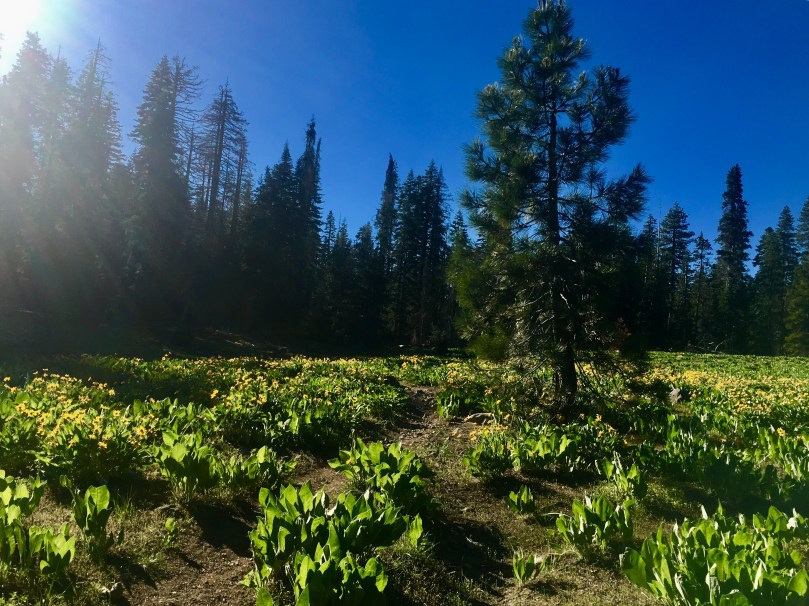
But first we started at Echo Lake near South Lake Tahoe where there was still a lot of snow. Who’d a thought a place famous for skiing would have so much snow…
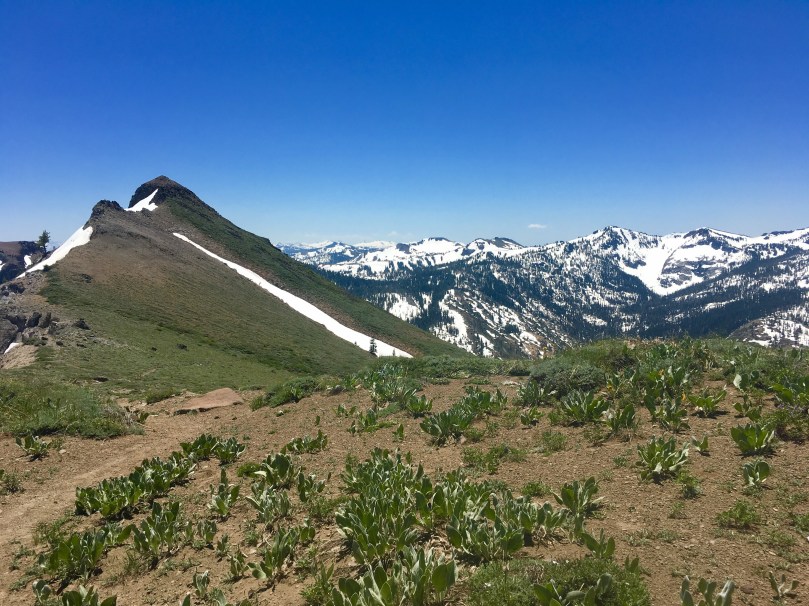
Recently melted saddles are where we saw most wildflowers in the 63 miles from Echo Lake to Donner Pass. One of the biggest bloomers and most recognizable being broadstem onion (Allium platycaule).
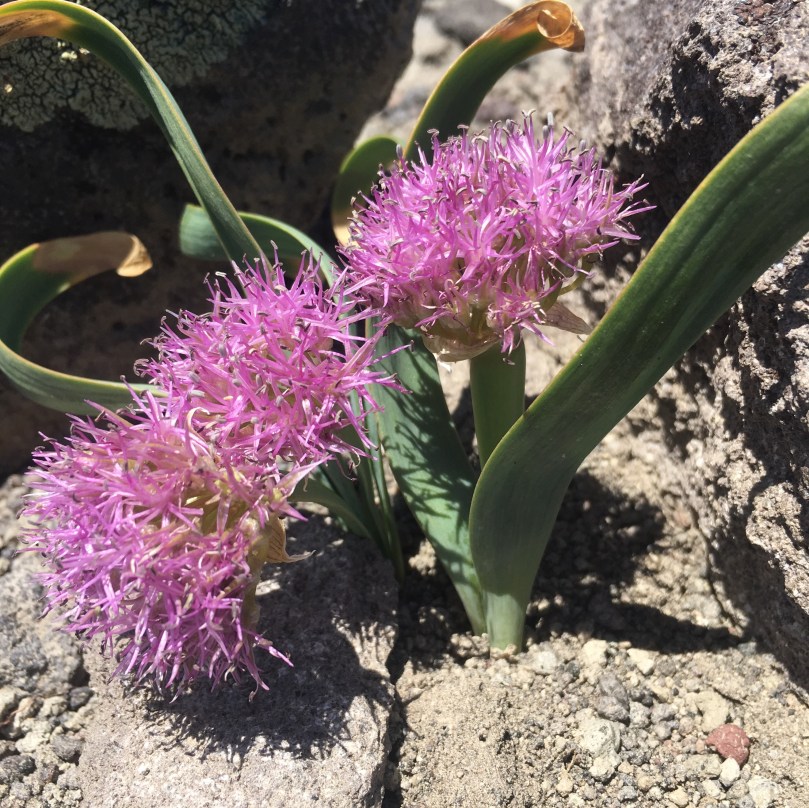
This member of the onion family is native to northeastern California, south and central Oregon and northwest Nevada. Named for its thin and strongly flattened scape.
Another common flower in these areas was California valerian (Valeriana californica).

Not to be confused with common valerian (Valeriana officinalis) used in valerian root herbal supplements. It is native to the same regions as broadstem onion, often favoring a little more shade.
More of a sun lover, and anexciting new plant for me, was the longhorn steer’s-head (Dicentra uniflora).
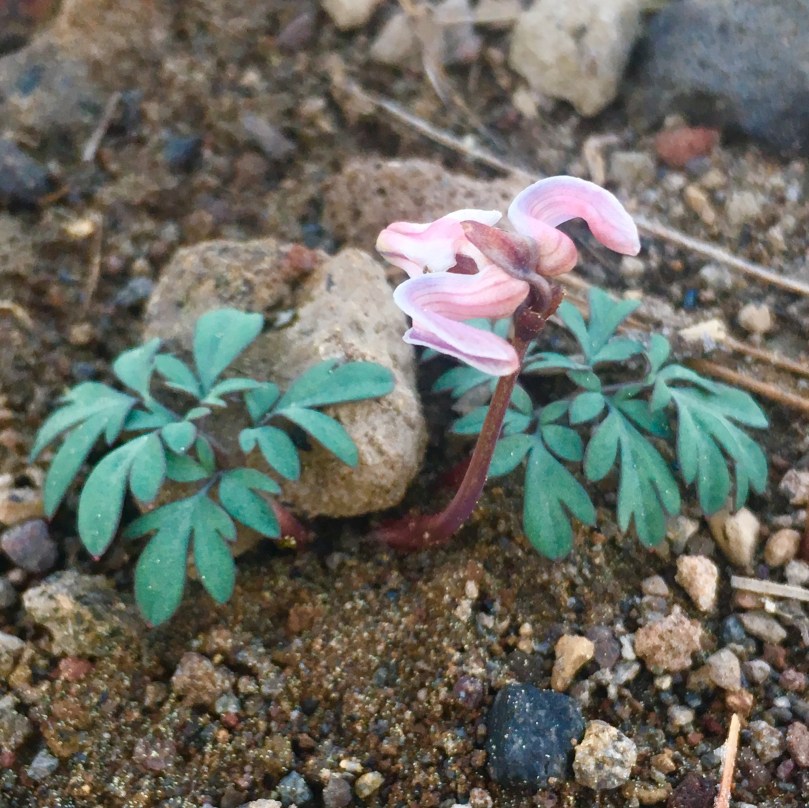
Had I known that’s what the flower was, I would have taken this picture from the opposite angle to really show the steer’s head…but hindsight’s a bitch. This dwarf perennial is related to the common garden plant, bleeding heart. It is one of the first flowers to bloom after snow melt and can be quite difficult to spot.
We haven’t seen much of the aforementioned plants since jumping ahead, but one that has remained common is woolly mule’s ear (Wyethia mollis).

Named for he woolly hairs on its leaves, this member of the aster family is found on east facing slopes of the Sierra Nevada. It thrives in volcanic soils thanks to its deep roots. The seeds are edible and said to taste similar to sunflower.
Another common, but much less showy flower has been one-seeded pussypaws (Cistanthe monospermum).
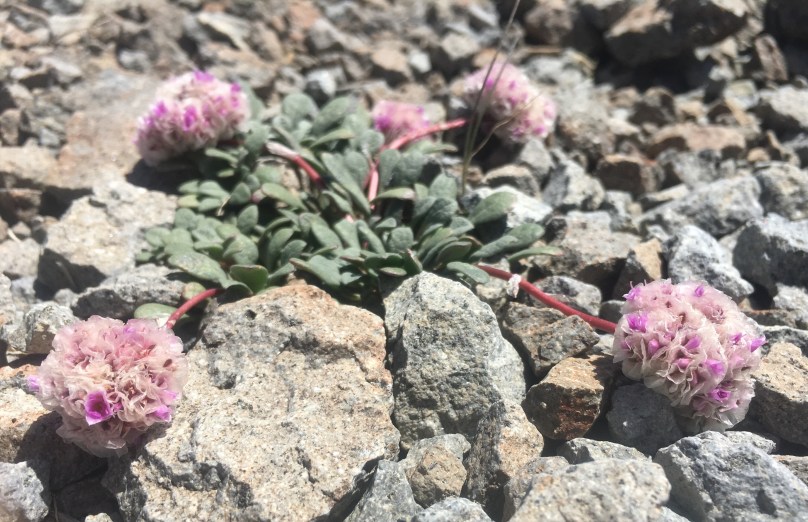
It is native to western North American from Oregon to Baja California. Grows in various habitats, from forest to rocky talus in April-September.
After too much snow and not enough flowers we jumped ahead again to Chester, CA. This beautiful snow free stretch of coniferous forest could not have been more uplifting. It was full of flowers, many related to plants commonly found in Midwest gardens like this western columbine (Aquilegia formosa).

Native to much of the western United States, this flower is attractive to hummingbirds and sphinx moths. Flowers are are edible with a sweet taste. Seeds and most other parts of the plant can be leathal due to the presence of cyanogenic glycosides. When chewed these enzymes break down into hydrogen cyanide, so beware!
In the same genus as longhorn steer’s-head and another common garden relative is pacific bleeding heart (Dicentra formosa).
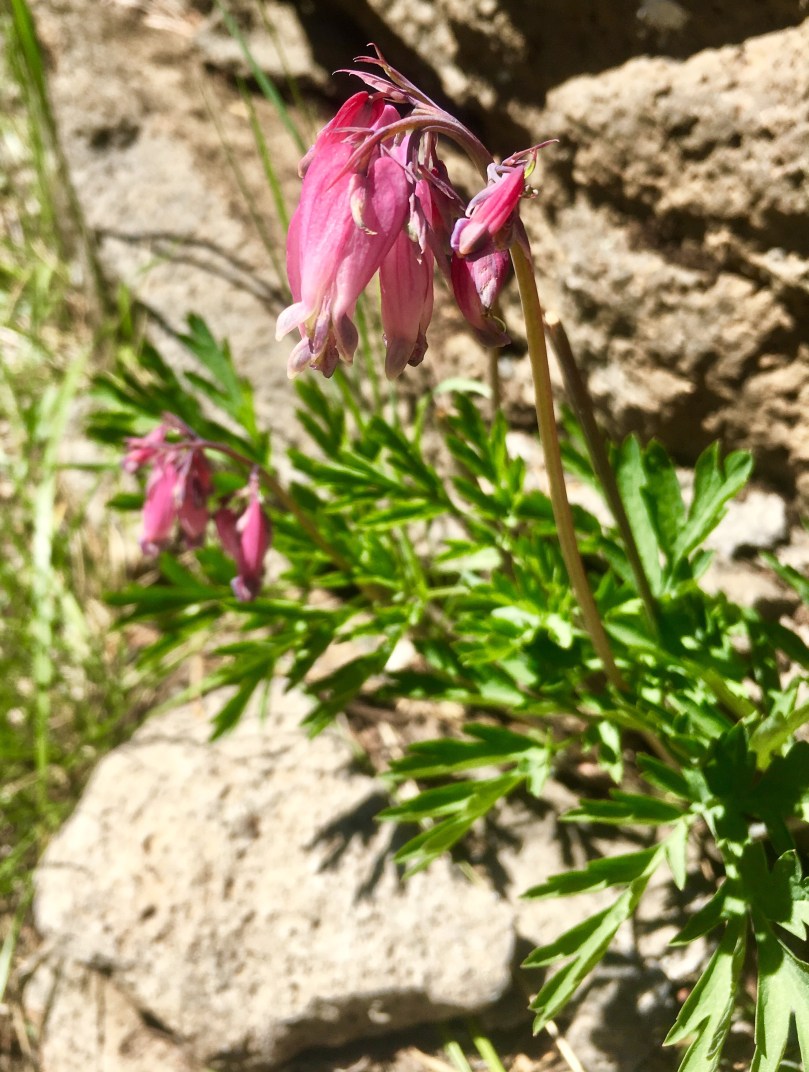
Native to the pacific coast (as you might infer from the name) this is another plant that’s attractive to hummingbirds and a food source for butterfly larvae. It blooms in the spring, goes dormant during summer heat reemerging to bloom again in fall.
Like in the desert, there continue to be various species of lupine, many too tedious to identify. But there have been two that we’re distinct enough to identify: narrowflower lupine (Lupinus angustiflora) and saffron-flowered lupine (Lupinus croceus).
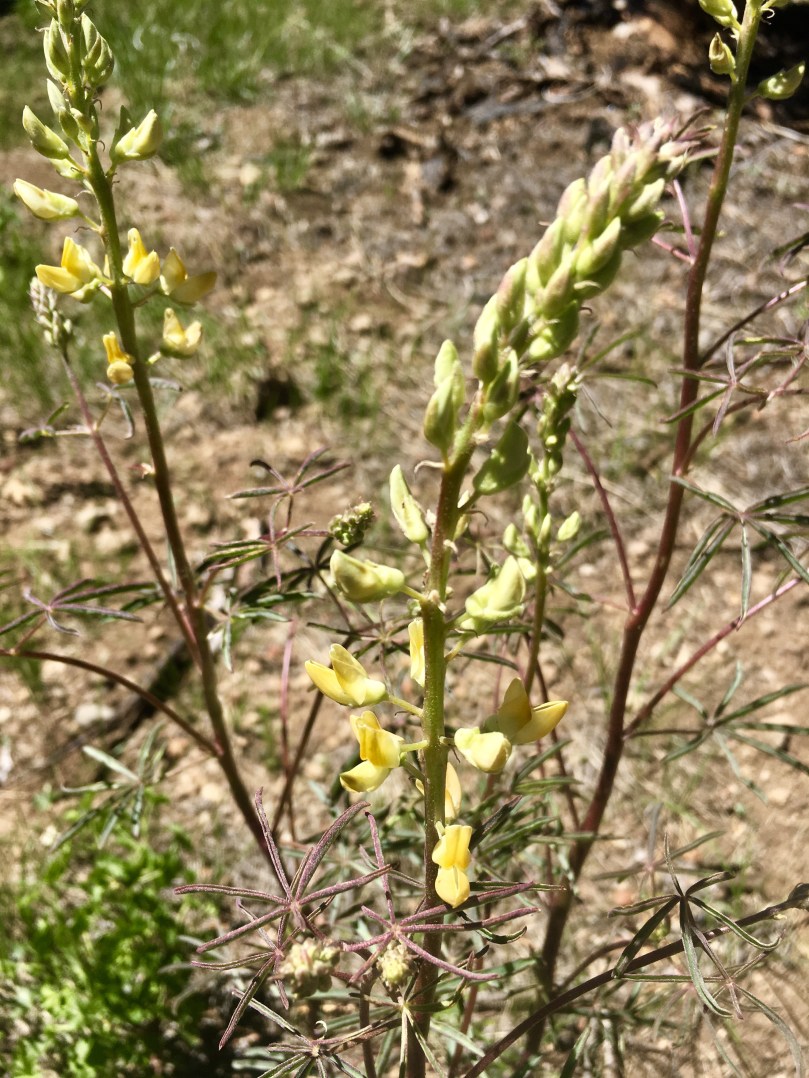
Endemic to volcanic soils of Northern California, narrowflower lupine is tall and slender with a deep red stem. The saffron-flowered lupine is also endemic to Northern California growing in dry, rocky habitats.

Both species of lupine are extremely dangerous if ingested.
Another recognizable wildflower loved by monarch butterflies is heartleaf milkweed (Asclepias cordifolia).

This species of milkweed is found in Northern California, southern Oregon and Nevada and is named for its milky sap and heart shaped leaves. The sap contains alkaloids that caterpillars ingest and continues to make them unpalatable to predators into adulthood. Miwok Native Americans used to dry the stem of these milkweed and process them into cordage.
Milkweed is a member of the dogbane family. The term is suspected to have originated from its use on dog bites. Characteristics of this family include oppositely arranged leaves and the milky or latex sap. Both are characteristic of spreading dogbane (Apocynum androsaemifolium).
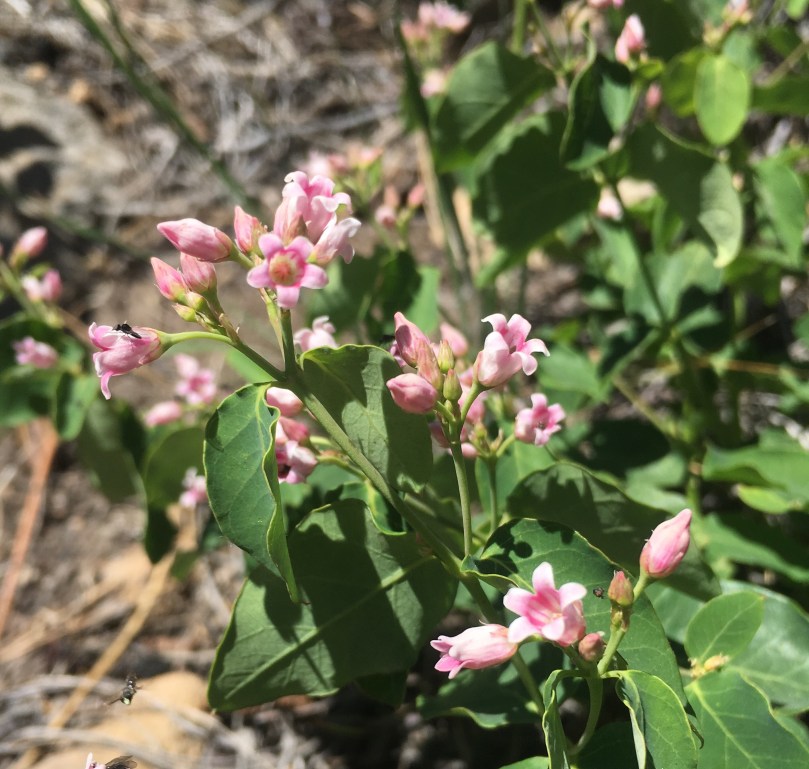
Spreading dogbane is native to most of the United States. It’s interior flower parts are lined with barbs, making it common to see small dead insects hanging from the proboscus, or mouth parts.
Another member of the dogbane family, but much less common is Sacramento waxydogbane (Cycladenia humilis).

This species is found scattered at high elevations. A subspecies of it, Jones waxydogbane, is listed as a threatened species.
Mountain beebalm (Monardella odoratissima) remained common through this section and showed great variety in coloration.


Both species of mint are attractive to butterflies. Nettleleaf horsemint can make good forage for sheep, deer and elk while also having seeds edible for human consumption.
Grand collomia (Collomia grandifolia), a member of the phlox family, has become a common garden plant in the west. It readily self seeds and will take over under moist conditions.
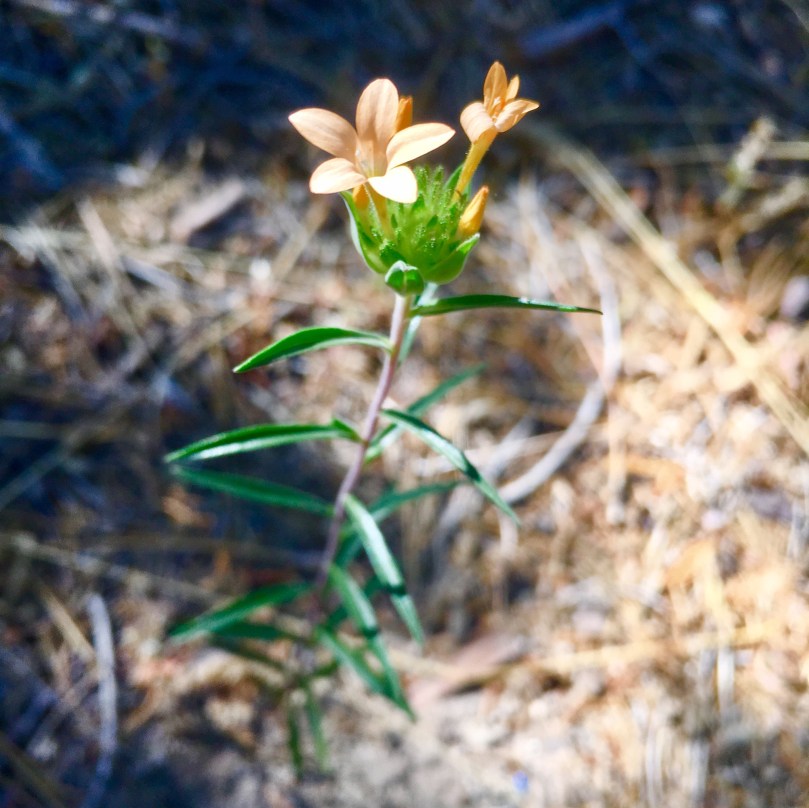
This species of phlox is attractive to bees, butterflies and hummingbirds and found in variable habitats. This specimen was found in partly shaded coniferous forest.
Another species fond of partially shaded forest is diamond or forest clarkia (Clarkia rhomboidea).
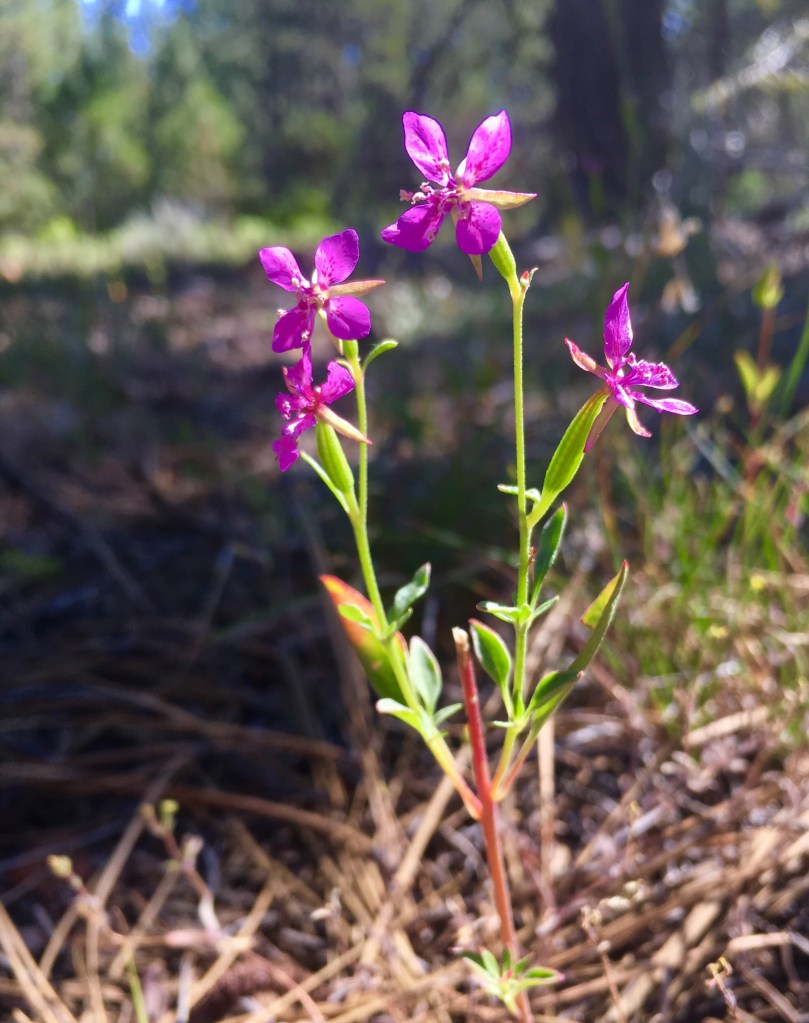
This is a small species of Clarkia not exceeding a meter in height. It is native to western North America and common in forest and woodland habitats.
Native to the same parts of North America, but more variable habitat, such as sagebrush chaparral, is the sagebrush mariposa lily (Calochortus macrocarpus).
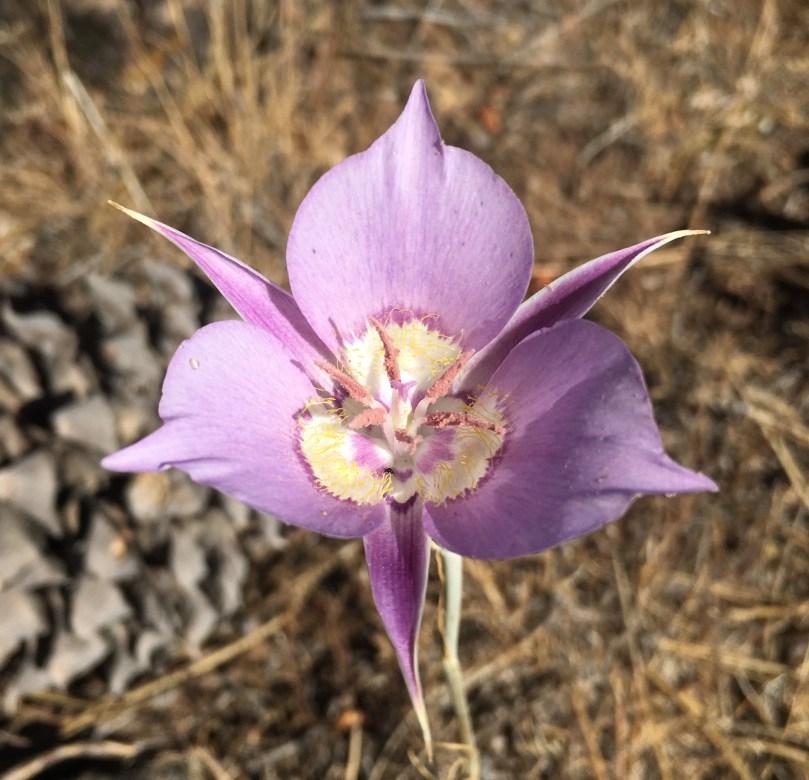
Traditionally, First Peoples of southern British Columbia harvested these bulbs from April to June. They can be eaten raw or cooked.
Two other wildflowers found in sagebrush chaparral, are rough eyelashweed (Blepharipappus scaber) and bachelor’s buttons (Centaurea cyanus).

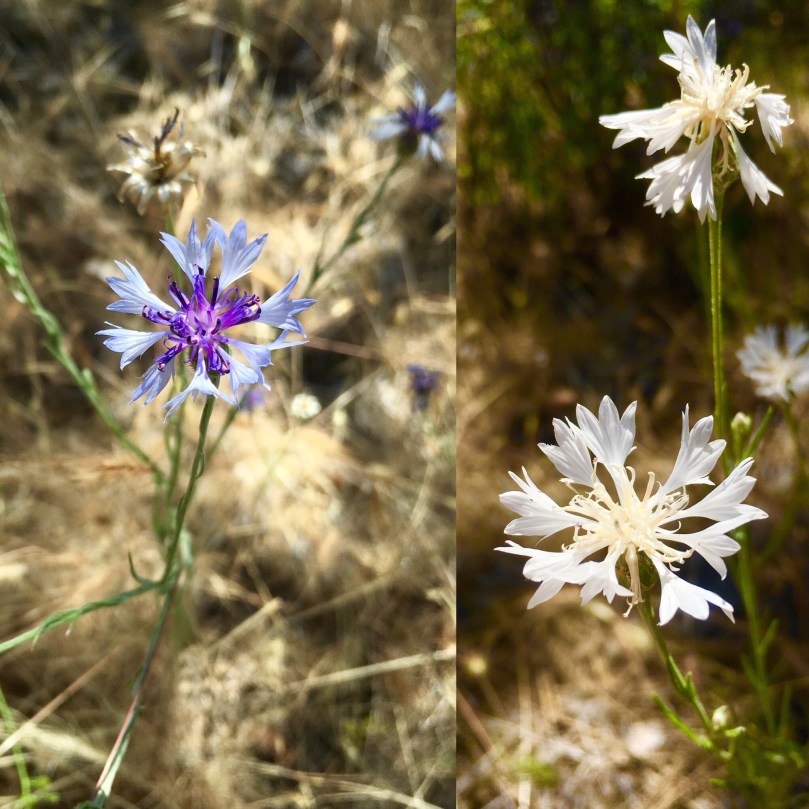
Next we entered the Shasta Trinity National Forest. This was a beautiful stretch of trail, dense old growth forest with some amazing talus, rocky area that gave way to views of Mount Shasta. One of the most prolific and drought tolerant bloomers we saw in these rocky, exposed areas was scarlet gilia (Ipomopsis aggregata). 
This flower is a biennial, meaning its first year of growth is just a basal rosette of leaves followed by stalks and blooming flowers the second year. Another plant that’s incredibly variable in its native range from the Rockies west, it is well adapted to herbivory from elk and mule deer. It is a favorite of hummingbirds, sphinx moths and long tounged bees.
Another flower that is endemic to California is the sierra iris (Iris hartwegii).
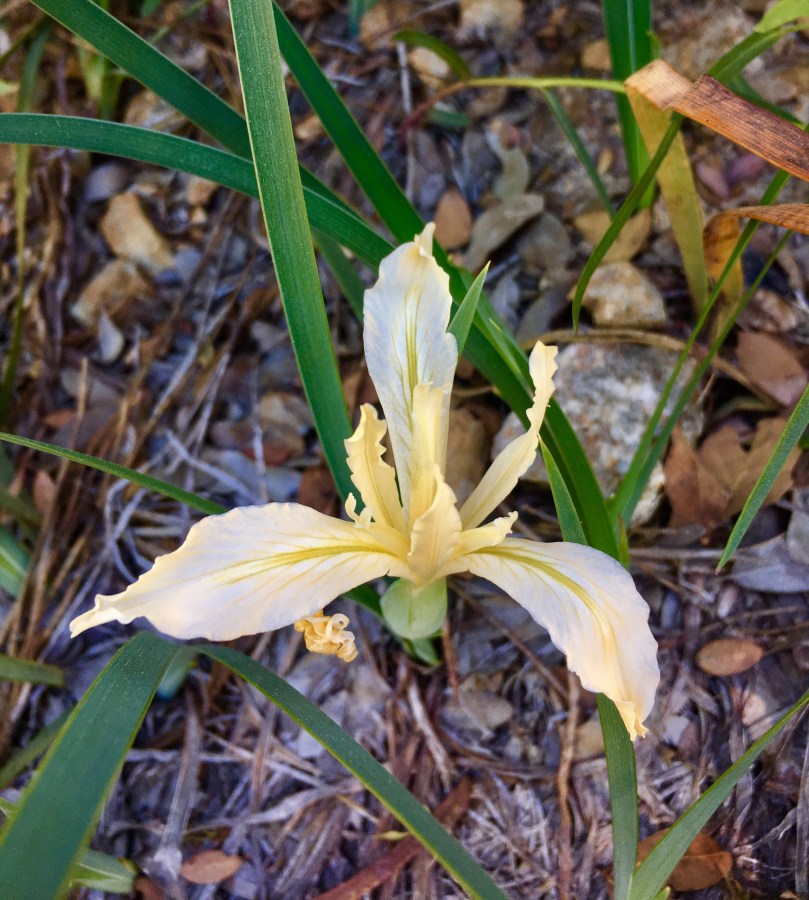
This iris was common in some of the more exposed stretches on low elevation slopes.
Though the yellowleaf iris (Iris chrysophylla) is not endemic to California, it ican be found in Northern California and southern Oregon.
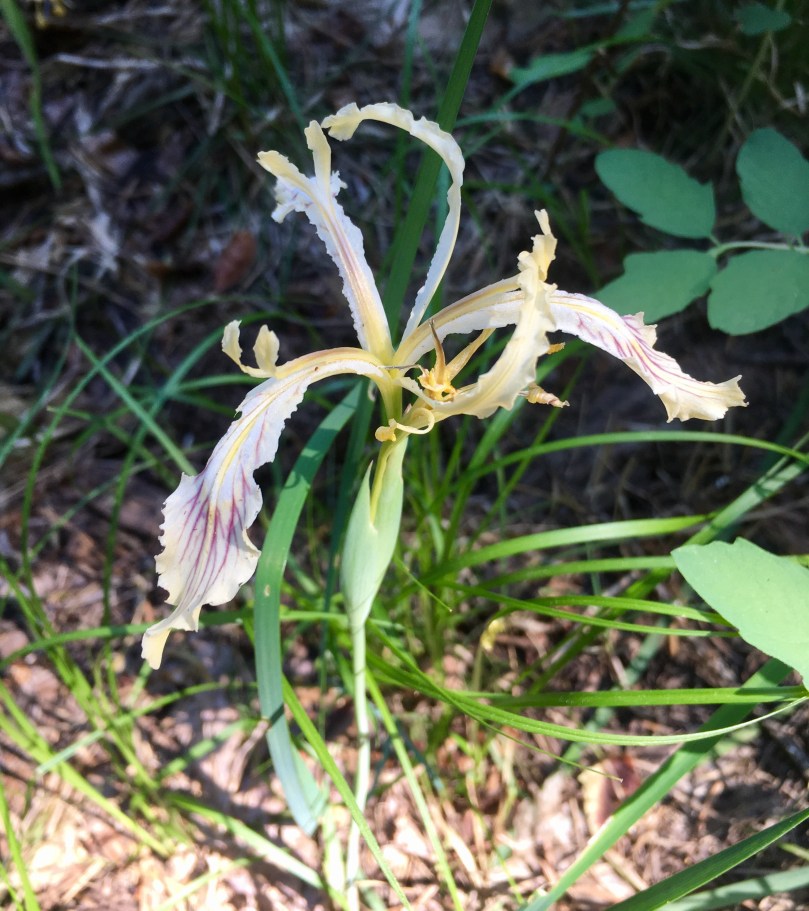
Another plant with many edible parts is fireweed (Chamerion angustifolium). Young leaves and shoots can be eaten raw or cooked while the root requires much cooking.
The name stems from its ability to recolonize areas after fire. It’s rhizomatous root system allows it to grow in large colonies. Seeds of fireweed are wind dispersed allowing them to travel great distances.
Thriving in disturbed areas and another rapid colonizer after fire is blue dicks (Dichelostemma capitatum). 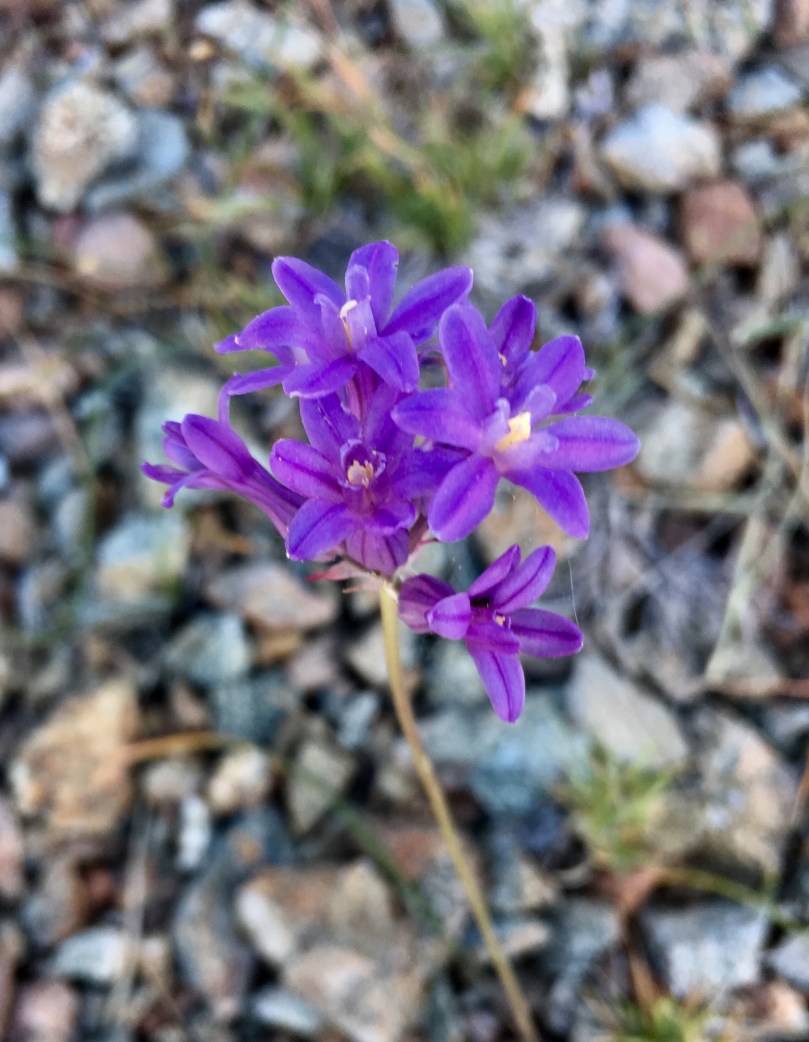
Like many wildflowers, seeds of blue dicks will remain dormant in the soil for decades until conditions are favorable for growth.
Growing in large colonies in burn areas is beargrass (Xerophyllum tenax).
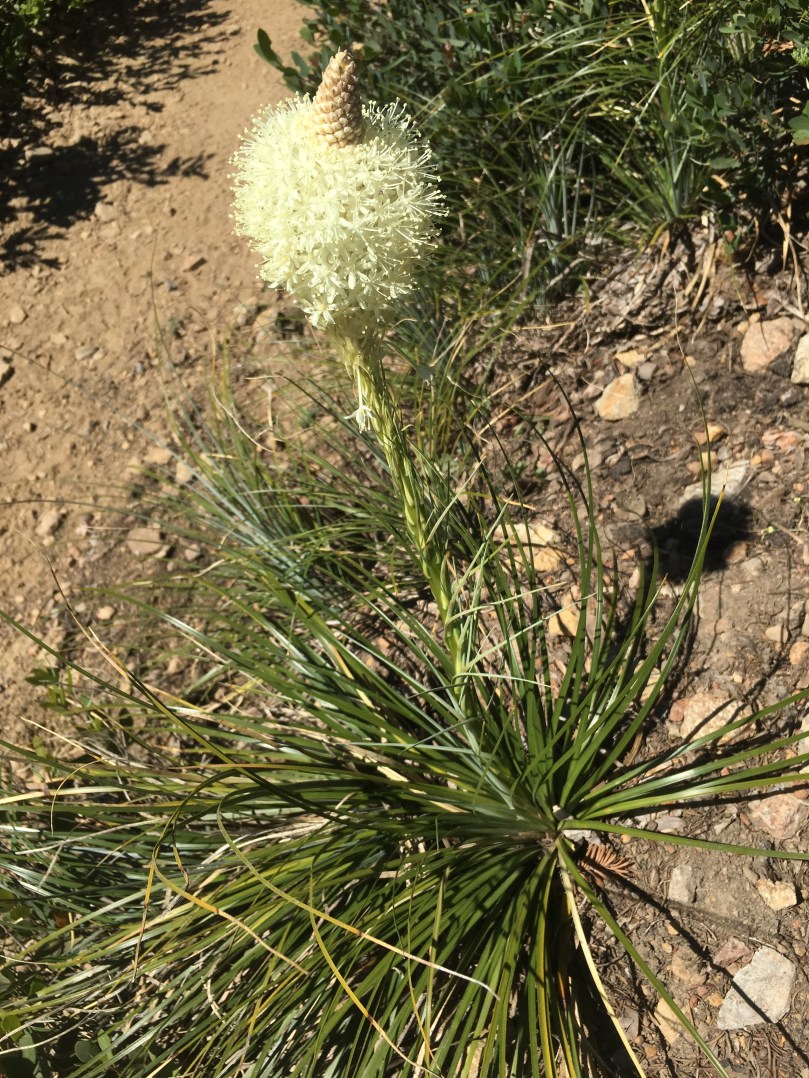
Native to the western United States, beargrass is found in subalpine meadows and coastal mountains. It’s rhizomes are capable of surviving fire when other plants at the surface burn.
Found in damp, grassy regions of the Great Basin is meadow penstemon (Penstemon rydbergii). 
One of the most widespread species of penstemon, this species is adapted for pollination by small bees. The bees crawl into the small opening that is the corolla tube to drink nectar and in turn pick up pollen.
While purple penstemon has been very common along the trail, this northern section has been home to more pink penstemon like mountain pride (Penstemon newberryi).

This species of penstemon grows on rocky, talus slopes and was John Muir’s favorite flower.
Native from California to Alaska, Drummond’s anenome (Anenome drummondii) is found in coniferous forests and alpine elevation.
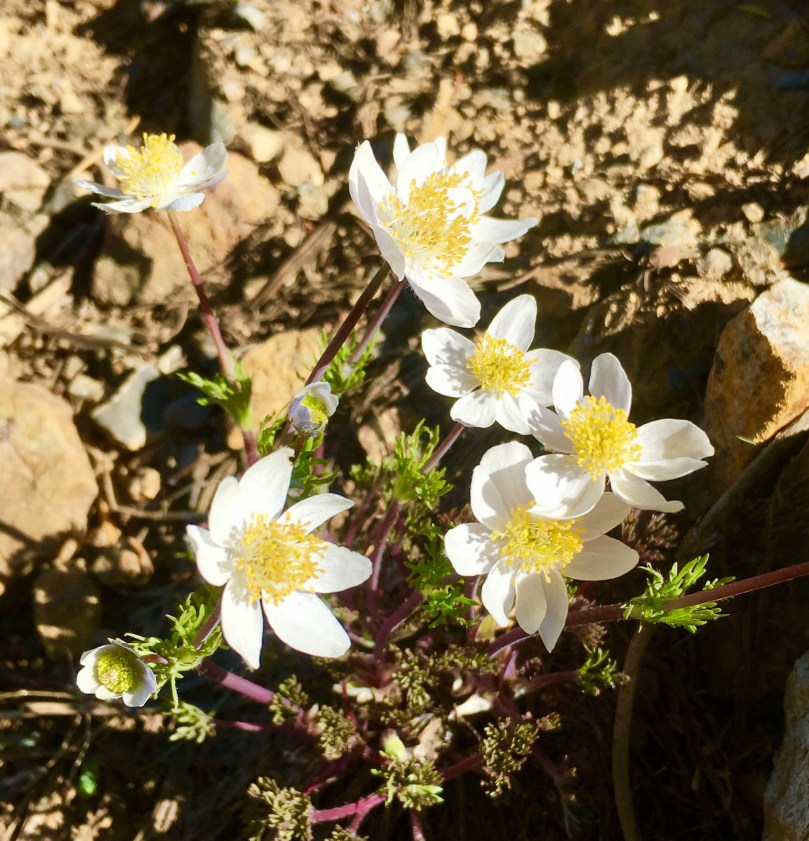
A member of the buttercup family, Drummond’s anemone is related to western columbine. Though the flowers are very different in appearance, members of the buttercup family characteristically have multiple simple pistils at the center of the flower.
Something I was not anticipating to see much of in Northern California were succulents. There have been several species of sedum occupying the sunny talus slopes. One of the first we spotted was coast range stonecrop (Sedum radiatum).

Sadly, we were a little late to catch it flowering, but it still adds some wonderful color to the landscape.
We were more lucky to see some Sierra stonecrop (Sedum obtusatum) flowering, but it too was mostly past its peak.
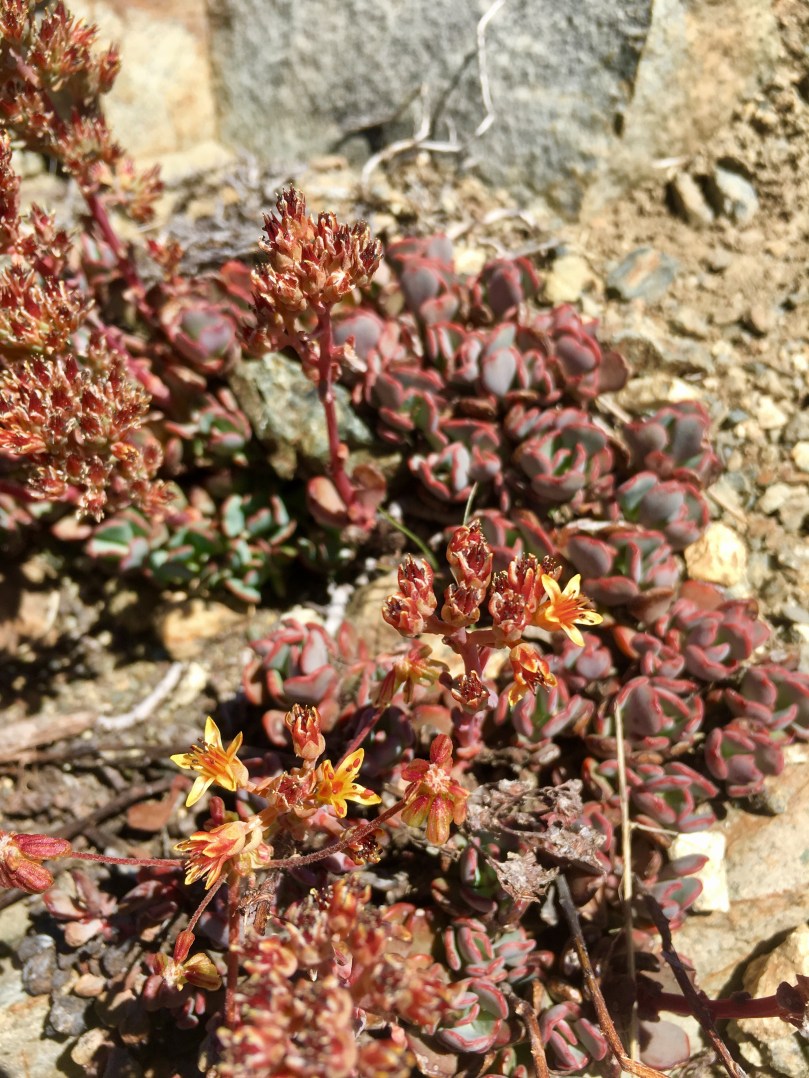
This sedum can be a host for variegated fritillary butterflies and is common to high elevation sunny talus.
The most exciting plant for me in this section was cliff maids (Lewisia cotyledon).
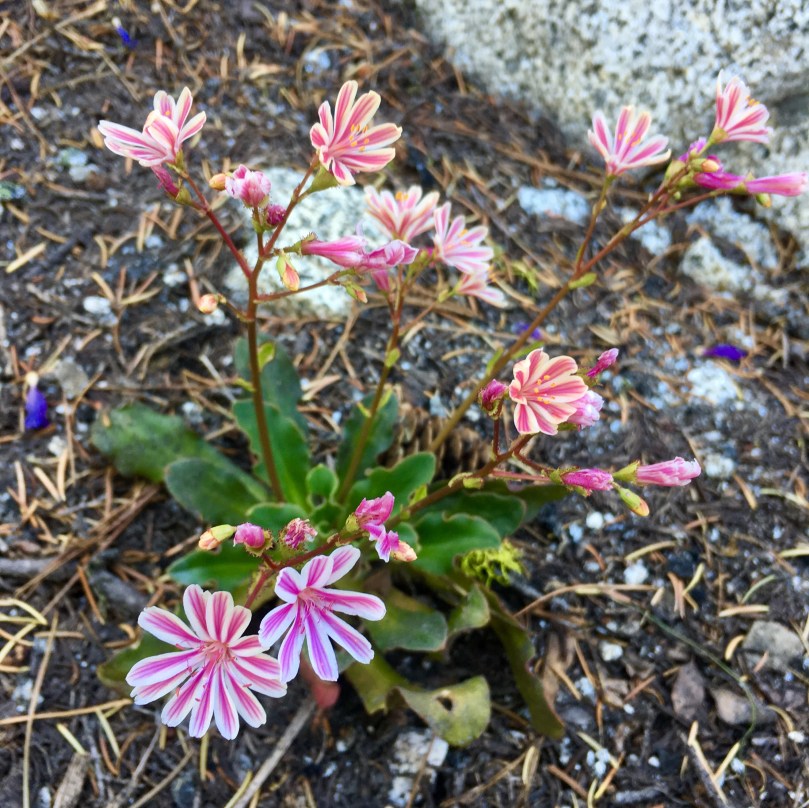
I’ve been seeing this plant in my app for weeks and finally on our last stretch into Etna they were everywhere on talus slopes. The basal leaves are fleshy, similarly to a succulent, however this flower is a member of the purslane family.
Stay tuned for some more exciting flowers in Part II coming soon!


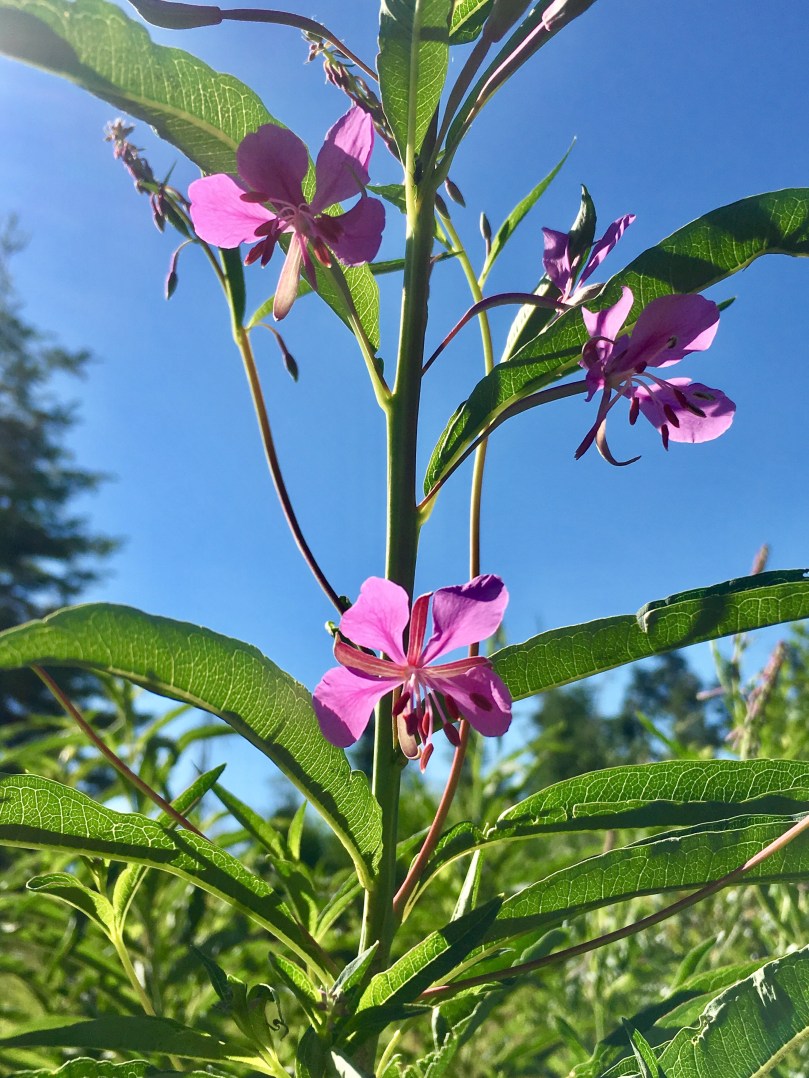
I enjoyed reading on the information on these plants.